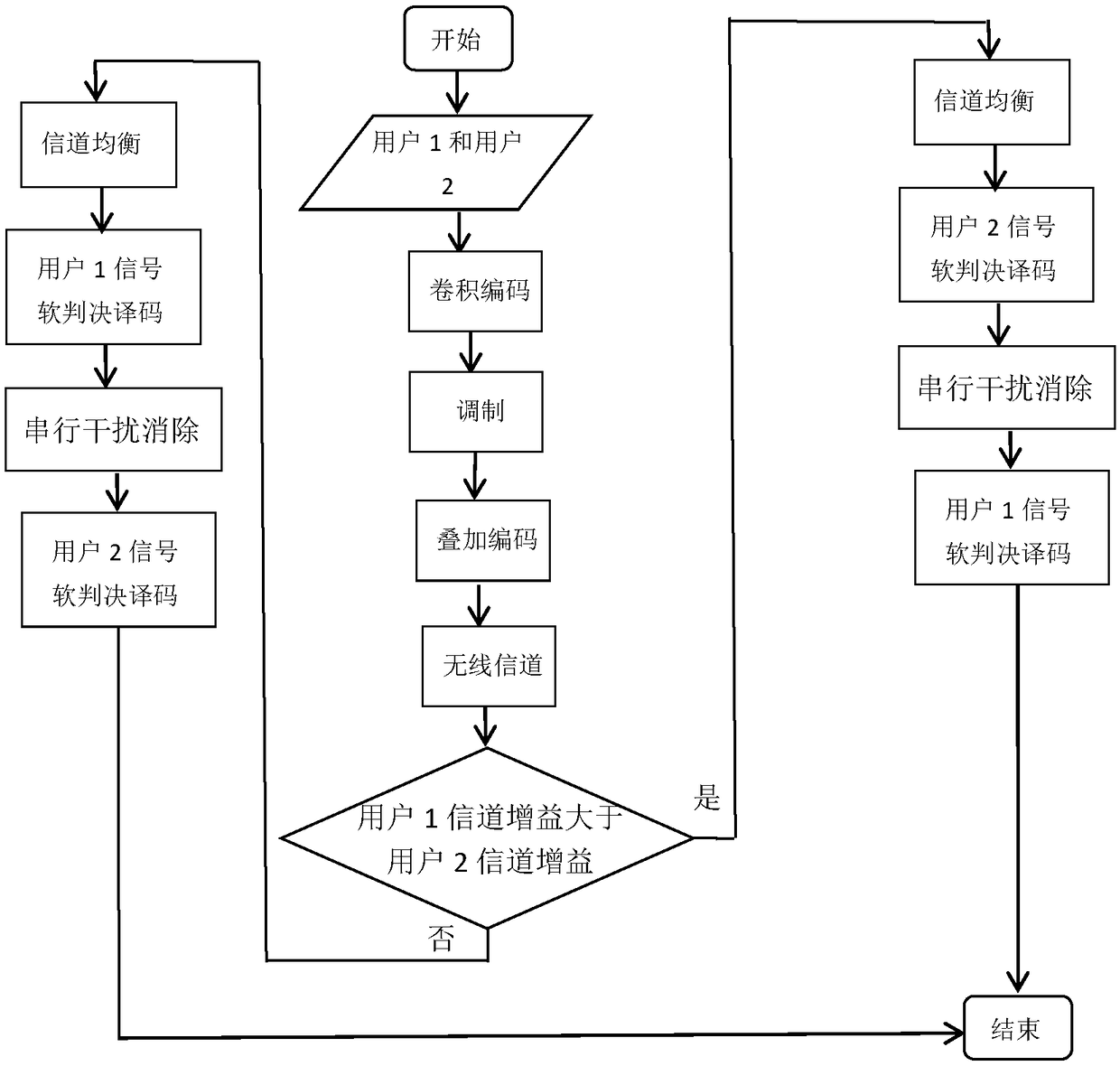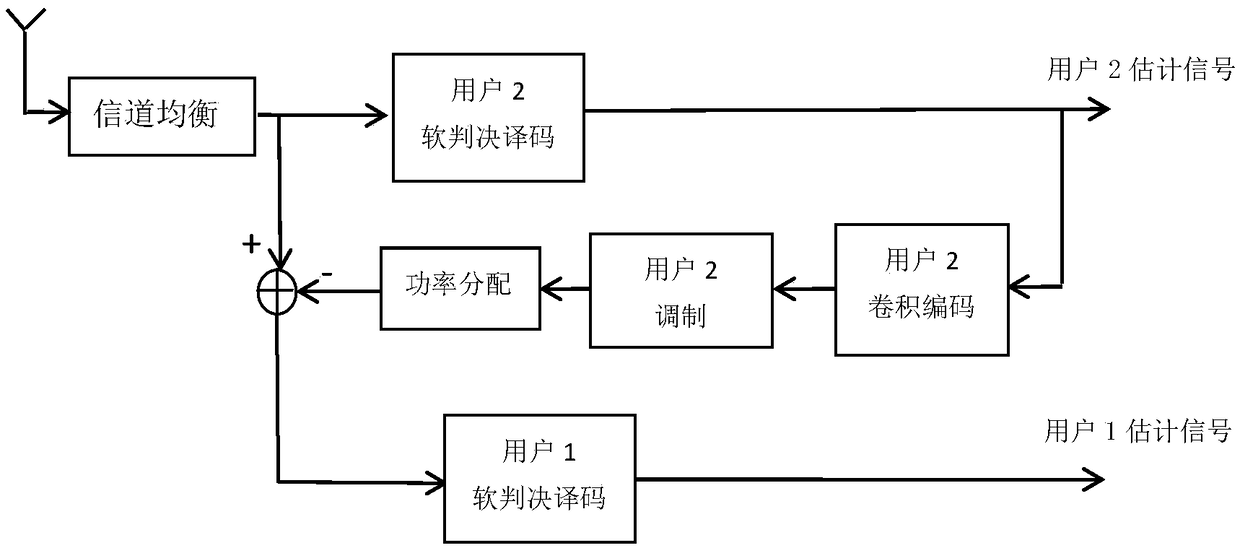Non-orthogonal multiple access serial interference cancellation method based on soft decision decoding
A serial interference elimination and non-orthogonal multiple access technology, applied in the field of communication, can solve problems such as poor reliability, and achieve the effect of improving reliability and bit error performance
- Summary
- Abstract
- Description
- Claims
- Application Information
AI Technical Summary
Problems solved by technology
Method used
Image
Examples
Embodiment 1
[0034] Most of the current research on non-orthogonal multiple access assumes that the serial interference cancellation is ideal, that is, the interference can be completely eliminated. In actual situations, due to inaccurate channel estimation or inaccurate judgment, the interference signal cannot be completely removed from the mixed signal, and the target user is still affected by residual interference, resulting in poor system reliability. For this reason, the present invention proposes a non-orthogonal multiple access serial interference elimination method based on soft-decision decoding, see figure 1 , including the following steps:
[0035] (1) Channel coding for users multiplexed in the power domain: users in the non-orthogonal multiple access system can transmit on the same resource block through multiplexing in the power domain. In order to enhance the anti-interference ability of the user's transmitted signal during channel transmission, the convolutional coding in ...
Embodiment 2
[0048] The non-orthogonal multiple access serial interference elimination method based on soft-decision decoding is the same as embodiment 1, and the user described in step (1) performs channel coding to the power domain multiplexing user, including the following steps:
[0049] refer to image 3 , perform convolutional encoding on the binary sequence of user i (i=1, 2) multiplexed in the power domain. If the binary sequence of user i (i=1,2) is u i =(u 0 u 1 u 2 u 3 ......), the codeword sequence of the two output ends of the corresponding encoder is and and By encoding the equation can be written as The symbol represents the convolution operation, g 1 , g 2 Represents the two impulse responses of the encoder, that is, the input sequence and the two impulse responses of the encoder are respectively convoluted to obtain the two output codeword sequences of the encoder; the convolutional encoder is composed of a six-bit shift register, and the impulse The res...
Embodiment 3
[0052] The non-orthogonal multiple access serial interference elimination method based on soft-decision decoding is the same as embodiment 1-2, and the channel equalization is carried out according to the channel gain described in step (5), including the following content:
[0053] In order to compensate for the influence of path loss, channel equalization is performed on the received signal. Assuming that the receiving end knows the channel gain of the user, the channel gain of user 1 is greater than the channel gain of user 2, the serial interference cancellation is implemented on user 1, and the channel gain on user 1 , for the received signal r 1 For channel equalization, the channel gain h of user 1 1 , the equalized signal r h = r 1 / h 1 .
[0054] On user 1, the path loss of the received signal is compensated by the channel equalization method.
PUM
 Login to View More
Login to View More Abstract
Description
Claims
Application Information
 Login to View More
Login to View More - R&D
- Intellectual Property
- Life Sciences
- Materials
- Tech Scout
- Unparalleled Data Quality
- Higher Quality Content
- 60% Fewer Hallucinations
Browse by: Latest US Patents, China's latest patents, Technical Efficacy Thesaurus, Application Domain, Technology Topic, Popular Technical Reports.
© 2025 PatSnap. All rights reserved.Legal|Privacy policy|Modern Slavery Act Transparency Statement|Sitemap|About US| Contact US: help@patsnap.com



